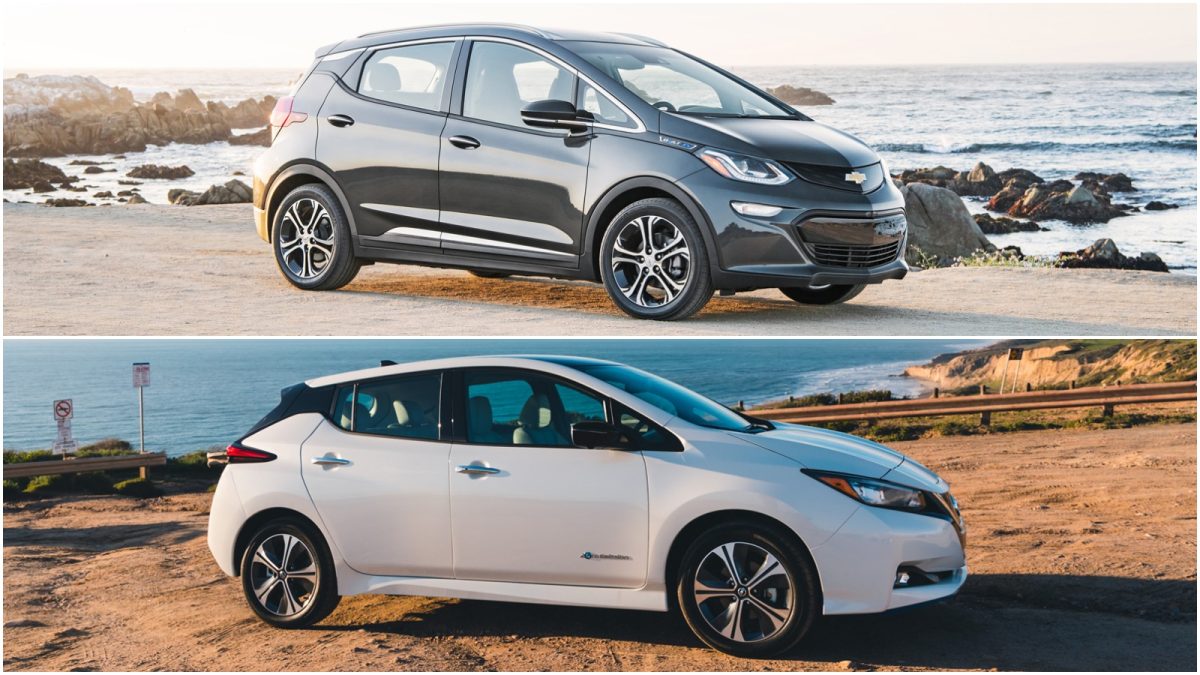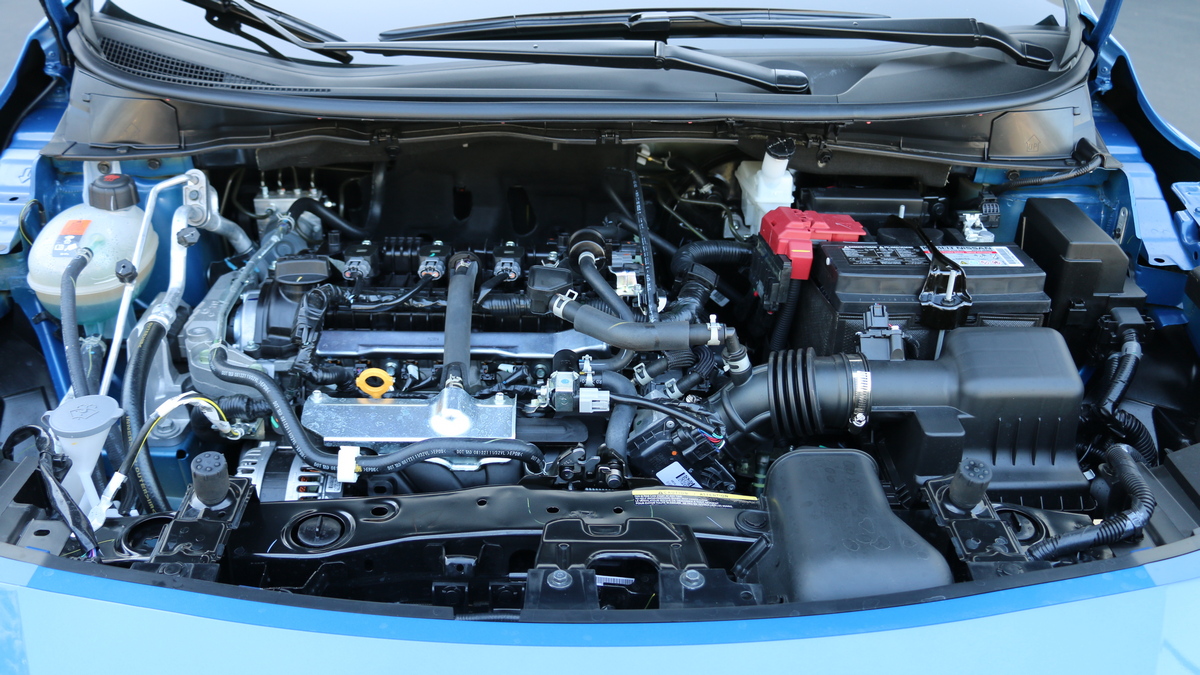Quick Tips About Starter Electric Vehicles
- Cost and affordability—EVs offer long-term savings potential through lower fuel and maintenance costs, lease specials, and discounted used models.
- Safety and technology—Many EVs have advanced safety features, such as automatic emergency braking, lane-keeping assist, and other driver aids, which enhance safety and engagement for new drivers.
- Range and charging—Shorter-range models are less expensive and suitable for commutes to nearby schools and jobs, and home charging accessibility is preferred.
Today’s teenagers are part of a generation with a heightened awareness of their environmental impact compared to those before them. And living in an age with more information about carbon emissions affecting our planet may make them more inclined to purchase an electric vehicle as their first car.
Here are key considerations when shopping for EVs for young drivers and some top contenders across multiple automakers.
- How to Choose the Best Starter Electric Car
- Best Electric Cars for Teenagers
- Affordable Electric Car Leases for Teenagers
- Used EVs for Teens
- Electric Car Considerations for Teen Drivers
- Are EVs Good for Teenagers?
How to Choose the Best Starter Electric Car
Cost and affordability often top the list of factors for most people. Whether you’re buying the car for your teen or they’re saving up to purchase something themselves, the car-shopping budget likely has limits.
How far you can travel between charges is a significant part of how the car serves your needs. For teens still learning about car maintenance and driver responsibilities, paying attention to the battery’s charge is especially important.
The Tesla Model 3 is a good option if you prioritize range and sleek styling. On the other hand, a used Chevrolet Bolt EUV at a lower price may be a better choice if you’re seeking more space and the versatility of a hatchback with fold-down rear seats. Like shopping for any vehicle, choosing an electric car for teenagers ultimately comes down to the driver’s needs, priorities, and commuting habits.
Benefits of Electric Cars for Teen Drivers
- Lower fuel costs: Charging an electric vehicle is often thriftier than filling up the tank in a gas-powered car, especially when charging at home. The price per gallon of gas fluctuates more often and more widely than electricity rates.
- Less maintenance: EV motors have fewer moving parts than gas-powered cars, so there are fewer maintenance tasks. Drivers don’t need to worry about oil changes or servicing a transmission or exhaust system.
- Affordable used options: The prices of used electric cars continue to trend downward as the alternative fuel vehicle market expands. Choosing a pre-owned model from a dealership or buying from a private seller makes it easier to find budget-friendly options.
- Newer technology: Features like touchscreen infotainment centers, advanced safety features such as emergency braking, and driver aids that include lane-keeping assistance are standard in lower trim levels of many EVs.
- Long-range options: Several entry-level EVs boast impressive electric range. While most teens don’t drive too far from home, larger battery packs can permit several days of driving to school, work, and extracurricular activities between charging sessions.
MORE: Electric Cars 101: What You Need to Know About EVs
Best Electric Cars for Teenagers
You can define a starter EV by its affordability, driving range, and overall ease of use. These qualities should be in the ideal electric car for teens. The EV should be practical and have safety and convenience features for young drivers preparing to hit the road on their own. Oh, and it must have an embarrassment factor of zero. Here’s our list of the best options to consider as you start your search.
Chevrolet Equinox EV
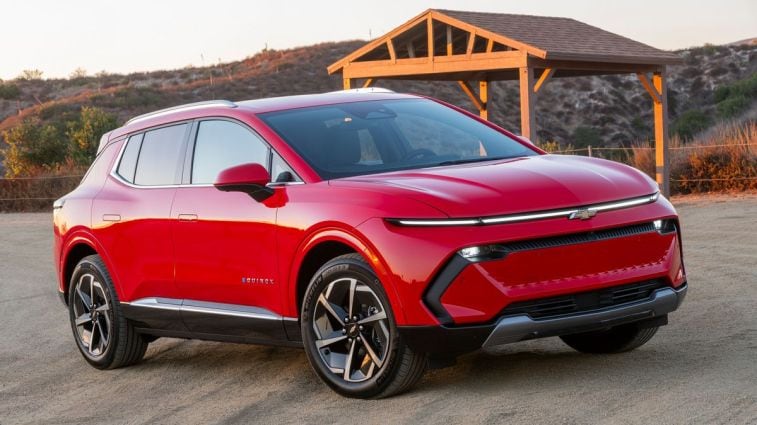
The all-new 2025 Chevrolet Equinox EV is wider and longer than its gas-powered sibling. It’s roomy, comfortable, and has loads of safety and entertainment tech, making it very easy to recommend. Starting at $34,995, this impressive compact SUV has a 319-mile range and has the potential to carry a teen driver into the next stage of their life.
Nissan Leaf
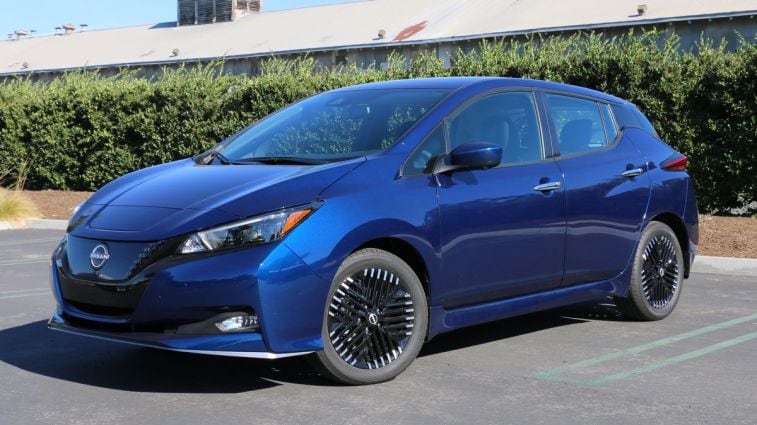
The Nissan Leaf was one of the first fully electric cars on American streets. It’s sensible and a solid choice for teenagers who recharge the battery at home, school, work, and activity trips. Today, the base model starts at $29,280 and can travel up to 149 miles on a full battery. Ideal for short commutes instead of longer drives, the Leaf is comfortable, competent, and stable. Its luggage area is adequate, and the rear seats have ample legroom.
Affordable Electric Car Leases for Teenagers
The cars in this list have a higher price point than those outlined above, but there may still be great lease offers available that make them worth considering for younger drivers. Leased vehicles will have mileage restrictions, which may work well for teens driving only to nearby schools, activities, or work. Remember that charges apply for damage and dents beyond normal wear and tear when the lease ends, so teens must be responsible and take good care of the vehicle. Still, a lease can be a great way for teens to experience driving a new electric car with the latest safety features and not have a long-term commitment.
Kia EV6

With its alluring design and ample technology, the Kia EV6 is a breakout star among electric SUVs. It has a wide range of trims starting at $43,995. The car is enjoyable to drive, with precise steering and brakes that help inspire confidence in a young driver. It has a visually exciting exterior, a tech-forward interior with dual 12.3-inch screens, and a long list of standard features. Recent lease offers for lower trim levels of the 2024 model were under $200 per month for 24 months.
Volkswagen ID.4
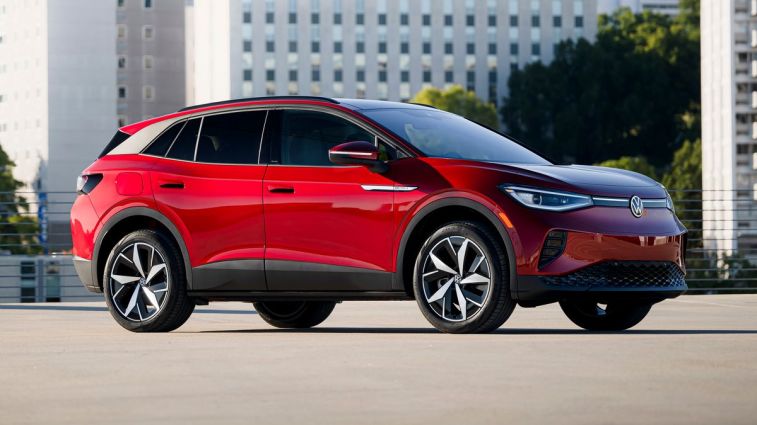
Our editors consider the 2024 Volkswagen ID.4 a practical and roomy all-electric SUV that is smooth, quiet, and enjoyable to drive. Depending on the trim level, the ID.4 offers between 206 and 291 miles of range and a suite of driver aids like blind spot monitoring, adaptive cruise control, and automatic emergency braking. The base model starts at $40,160, and Volkswagen recently offered a $189 per month lease special.
Hyundai Ioniq 6
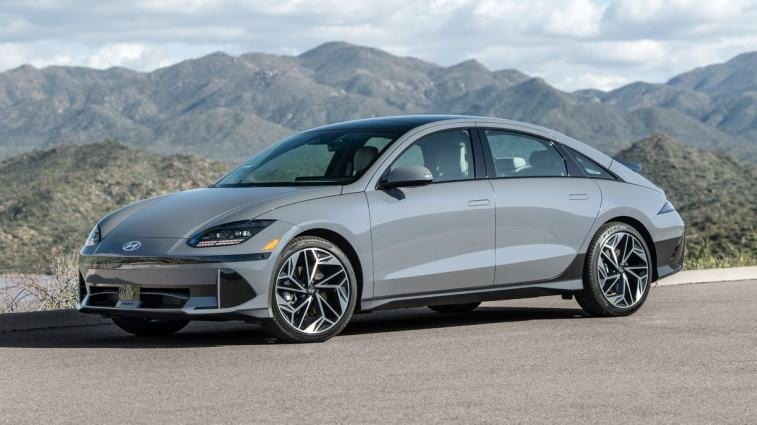
The 2025 Hyundai Ioniq 6 pairs innovative technologies with an impressive range of 361 miles in the RWD SE trim level. Perhaps best of all is how quickly its battery can charge: 18 minutes. Dual panoramic interior displays, ambient lighting, and a steering wheel illuminated by LEDs give the vehicle a futuristic feel. Prices start at under $39,000, and a recent lease offer for the SE Standard Range model was $169 per month.
RELATED: Leasing vs. Buying an Electric Car in 2025
Used EVs for Teens
Many electric vehicles have a high manufacturer’s suggested retail price (MSRP), but they may also be available in the used market at much lower prices. Consider buying a used electric car for teen drivers and open up a wider variety of options for a smaller budget.
Chevrolet Bolt EUV
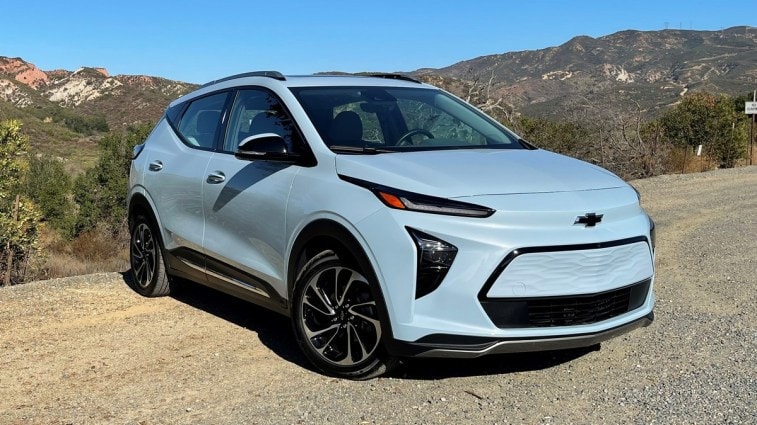
Chevy stopped producing the Bolt EV and its larger sibling, the Chevrolet Bolt EUV, in 2023. At that time, a new model boasted 247 miles of range, started at $27,800, and was our top-rated electric vehicle under $35,000. Today, upper trim levels in the used market are fetching about $20,000. The Bolt EUV features a more spacious backseat compared to the Bolt EV, which is perfect for teens transporting equipment for their various activities.
Kia Niro EV
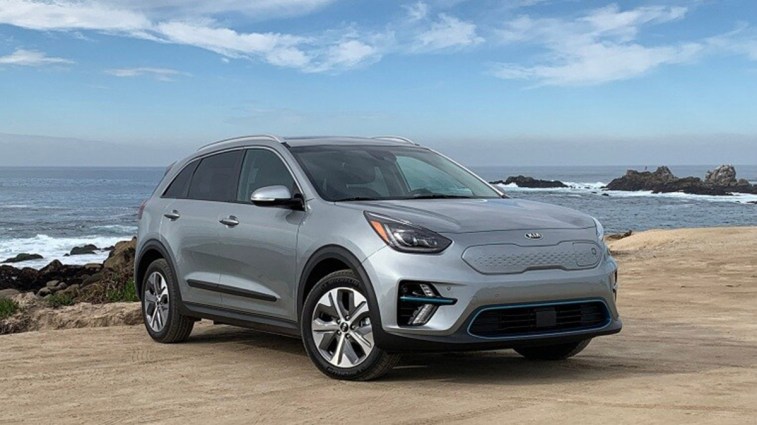
New 2025 models start at nearly $41,000, but used Kia Niro EV models are available for under $30,000. This small, practical, all-electric crossover is a great candidate for a young driver’s first electric car. Standard safety tech like forward-collision warning with automatic emergency braking, driver attention warning, and blind-spot monitoring make it hard to ignore. The range estimate for 2023 models and newer is 253 miles on a full charge.
Hyundai Ioniq 5
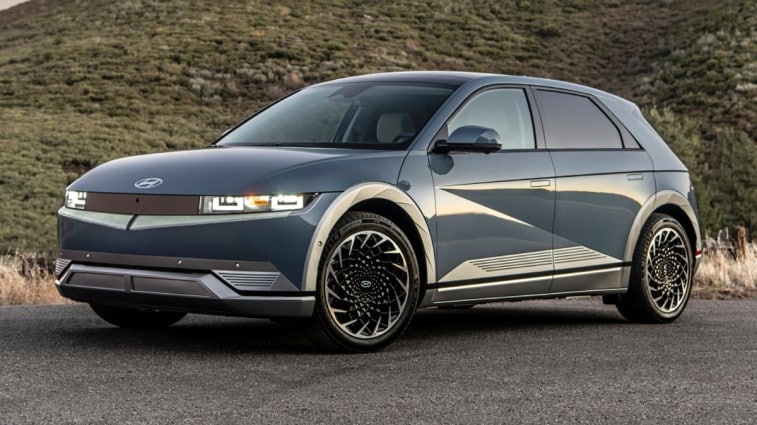
The Hyundai Ioniq 5 is a beautiful blend of performance and function, with plenty of tech, standard equipment, and battery capacity that make it an excellent electric car option for young drivers. The 2025 Hyundai Ioniq 5 holds the top spot on our Best Electric SUV list, just as it did last year, and it earned our Electric Vehicle Best Buy Award winner in 2025. Finding a used Ioniq 5 is even better for your wallet.
Tesla Model 3
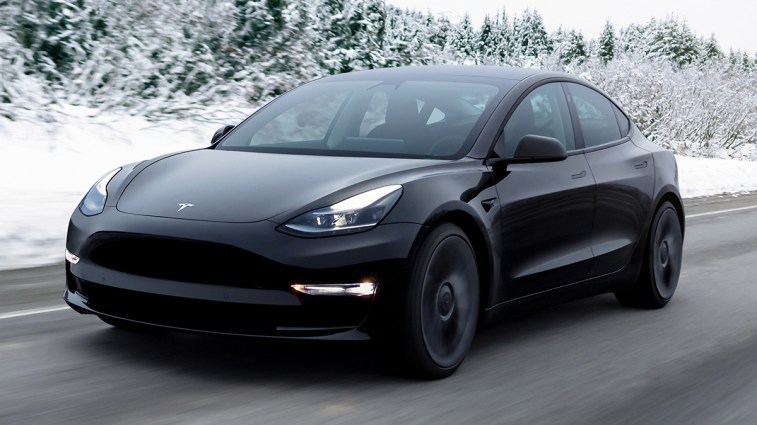
The Tesla Model 3 is one of America’s best-selling EVs and earns a spot on this list because of its engaging driving experience and about 270 miles of range in the base model. (The Standard Range was discontinued in 2025.) Knobs and buttons are nearly nonexistent in favor of a huge touchscreen for operating most functions, including air vent directions. The lowest-priced Tesla is one of the Insurance Institute for Highway Safety’s (IIHS) Top Safety Picks. It also earned five stars from the National Highway Traffic Safety Administration (NHSTA). Used models in the mid-$20K range are plentiful, including those with longer-range batteries.
Electric Car Considerations for Teen Drivers
While electric cars can be great for teen drivers, there are a few key considerations to keep in mind. Research your options thoroughly to have a clear understanding of the EV market.
Speed
Even modest electric cars can have impressive acceleration capabilities that can rival sports cars. While quickness is desirable, new drivers must respect the instant torque from electric motors. Responsible driving should always be the priority, even with a vehicle’s abundant safety features. Utilize parental controls to monitor or restrict certain driving behaviors. Set clear expectations and guidelines for the appropriate use of the EV. Education and instruction will develop a safe driving environment for young individuals and also help safeguard others on the road.
Range
The term “range” refers to how many miles you can drive an electric vehicle on a single charge. This distance can vary significantly from one model to the next, depending on the battery capacity, body size, and other factors. For example, the base model Nissan Leaf has an estimated range of 149 miles. In comparison, the Hyundai Ioniq 6 has an estimated range of more than twice that distance.
Alternatively, plug-in hybrid electric vehicles (PHEVs) use a gas engine and an electric motor as their power source. Their smaller battery packs provide around 30 miles of electric range before the gas-powered engine takes over.
RELATED: Electric Car Range: Everything You Need to Know
Price
Prices for the Nissan Leaf currently start at $29,280, while the base model Kia EV6 starts at nearly $44,000. The price scale is wide and higher than that of gas-powered vehicles of similar size and features, but federal tax credits might apply. To be eligible for the credit, the vehicle must meet requirements on where it is manufactured, as well as stipulations regarding where the batteries are built and where materials are sourced from. Lower maintenance expenses help balance expenses over time.
Charger Accessibility
Electric vehicle charging infrastructure is still expanding. More than 80,000 public charging stations are available across the country for drivers to charge their cars. If you’re considering an EV for a teenager, think about whether they’ll have easy access to a charger. Recharging when parked at home is ideal, but living in an apartment or other multi-unit community can make it difficult to charge up overnight. Review the charging options in your neighborhood.
For those in a townhouse or single-family home, you’ll need a licensed electrician to install a dedicated Level 2 charger in your garage or driveway. Otherwise, you’re limited to Level 1 trickle charging via your standard 120-volt outlet. Still, using that option might replenish the battery for daily commutes to school.
Cargo Space
Cargo space may not be much of a consideration for the teen going to and from school, work, and minimal activities in between. However, for the student with lots of extracurricular equipment — sports gear, musical instruments, camping supplies, etc. — you’ll want to make sure there’s enough room for everything.
Are EVs Good for Teenagers?
An electric car can be an excellent transportation option for young drivers. However, the right choice depends on the individual’s circumstances. For the environmentally conscious teen who only drives short distances, an EV is a strong contender for a starter vehicle. However, for teenagers living in remote areas with longer commutes, or frequent road trips, college travel, etc., charging considerations take priority. In these instances, another vehicle might be a better choice.
MORE: How Do Electric Car Tax Credits Work in 2025?
Alternatives to Electric Cars
A hybrid or plug-in hybrid electric vehicle is a good alternative for teens who are not ready to commit to a fully electric vehicle. Hybrids work by combining an internal combustion engine with an electric motor to reduce emissions and boost fuel economy. These vehicles are often considered a bridge between conventional cars and EVs.
Traditional full hybrids and mild hybrids can be refueled at regular gas stations. The same is true for PHEVs, but their batteries must also be connected to a charging station or household power outlet when they run low. PHEV drivers can choose which power source to use depending on the commute. See our breakdown of hybrids vs. plug-in hybrids for a detailed explanation.
Editor’s Note: This article has been updated since its initial publication. Chantel Wakefield contributed to the report.
